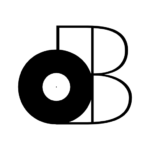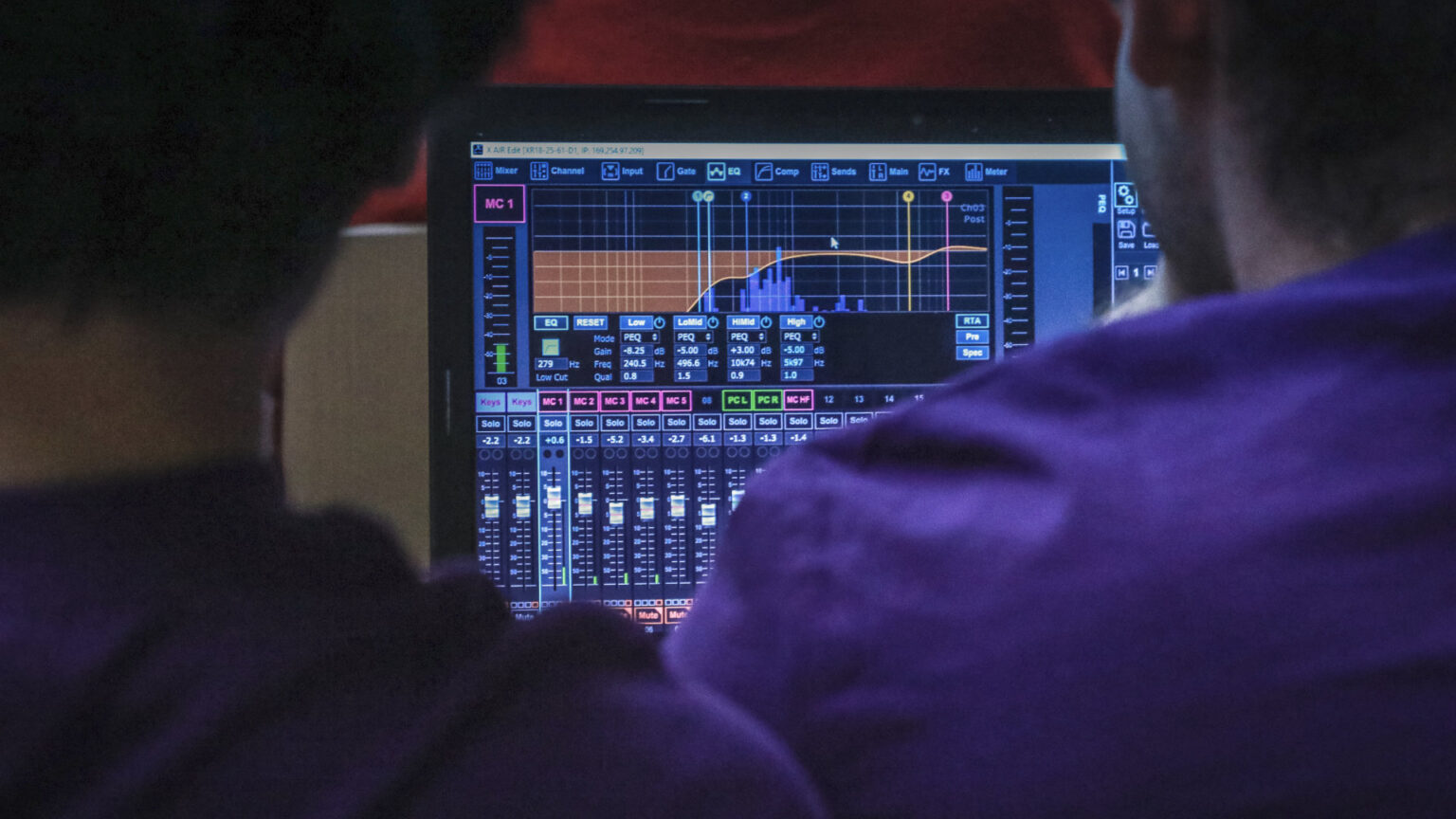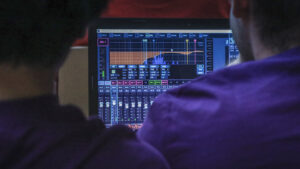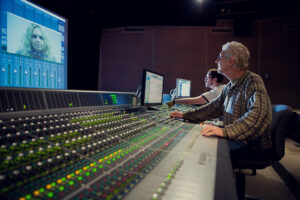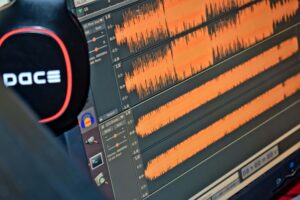From the thrilling soundscapes of Hollywood blockbusters to the immersive audio environments of AAA video games, sound design is the magic that brings those stories to life.
But did you know that the techniques and tools used in sound design can vary widely depending on the medium in which it is used?
In this article, we’re going to explore the fascinating world of sound design and uncover the differences between sound design for TV, film, and video games. We’ll dive deep into the key elements of sound design, including foley, sound effects and dialogue editing, as well as procedural audio systems and other advanced techniques. We’ll also introduce you to the members of the sound design team, from sound designers and supervising sound editors to foley artists and ADR recordists.
Whether you’re a seasoned sound designer or just starting in the industry, this article will provide valuable insights and information to help you better understand this essential aspect of media production.
So, what is sound design?
Get ready to discover how you can become a part of this exciting and dynamic field!
- Elements of Sound Design
- Members of the Sound Design Team
- Summary: What Is Sound Design in TV, Film & Video Games?
Elements of Sound Design
If you haven’t seen the documentary called “Making Waves: The Art of Cinematic Sound”, I highly recommend check it out!
It breaks down the elements of sound design into 3 main categories…
- Dialogue: It’s undoubtedly the most important element of sound design in TV, film and video games because it’s essential to pushing the story forward. We can break down dialogue into 3 sub-categories; production recording, dialogue editing and ADR (automated dialogue replacement).
- Sound Effects: The soundscape is the elementgn that takes the most work, but not many realize it (if you’d listen to a film without sound effects, you’d immediately get it). We can break down sound effects into 3 sub-categories; SFX, Foley and ambience.
- Music: The soundtrack is like the icing on top of the cake, but it’s actually just as important as dialogue when it comes to storytelling. This element of sound design cannot be broken down into sub-categories because its a whole process in it of itself.
That’s actually how a sound designer would organize his/her Pro Tools session. Take a look!

However, it would be slightly different if we were talking about sound design for video games (and/or other interactive media).
We’re still dealing with the same fundamental elements, but we’re working with different types of softwares (Wwise, FMOD, Unreal Engine, etc…). They give us the ability to create interactive experiences that adapt to the player’s gameplay which requires the additional step of programming.
That being said, let’s dive a bit deeper into each element to understand what’s going on underneath the surface…
Production Sound
The production sound (or location sound) is the audio delivered to the audio post-production house by the production sound mixer/recordist.
99% of this audio will contain dialogue recorded by wireless lavalier microphones and boom microphones. 1% will be general ambience and false takes.
If you’re getting an AAF file from the video post-production house, there’s a possibility that the dialogue has already been sorted out. However, it’s possible that the video editor left both the lavalier microphone tracks AND the boom microphone tracks for the dialogue editor to pick the best.
Either way, you’ll be receiving the audio already synced up to the video (if not, then I feel very bad for you).
So, as the sound designer… It’d be your job to decide how much of the production audio will be used.
If it’s an american film (that wasn’t directed by Quentin Tarantino), chances are that 90% of the dialogue will be re-recorded in ADR.
If it’s a TV drama shot in Quebec, chances are that they won’t have the budget for ADR. So, you’ll need to work with what you have!
Dialogue Editing
Film sets are unpredictable and guess what, most film sets aren’t acoustically treated or sounproofed.
That being said, the sound design team will most likely need to process what will be used of the production sound to make it presentable.
Here are some techniques that are commonly used…
- De-noising
- De-reverb
- De-essing (for sibilance)
- EQ
- Compression
- Fade in/Fade out
Editing dialogue can be quite a labour intensive task which is why I usually get it out of the way first.
The sooner, the better. That’s because the sooner we know if we need ADR, the better it is!
ADR (Automated Dialogue Replacement)
In some sectors, ADR has become such common practice that they include it in the actors’ contract.
The process is very similar to voice-over recording, but it’s much more of a performance in this case. That’s because the actor needs to recreate his/her performance EXACTLY like it was done on set (which is quite a skill).
It will be recorded in a studio environment in front of a video monitor synchronized with the cut.
Sometimes though, additional dialogue is recorded in ADR (which wasn’t originally part of the script). For example, it could take the form of a simple voice-over for a character that wasn’t on set or it can be used to replace/change a line of dialogue.
Regardless, ADR is the final pit-stop for anything related to dialogue. After that, it’s the re-record mixer’s job.
SFX
When we’re talking about SFX, we’re talking about every sound that isn’t man-made.
For example…
- Explosions
- Weapons
- Vehicles
- Devices
- Applicances
- Swooshes
- LFE (low-frequency effects)
Most of the time, these SFX will be taken from pre-recorded libraries and assembled by the sound editor(s).
However, the distinction needs to be made between SFX and Foley (which we’ll be talking about next). The difference isn’t huge, but it comes down to the difference between a manufactured product (SFX) and a performance (Foley).
The blaster sound from Star Wars? SFX.
The lightsaber performance from Star Wars? Foley.
Foley
What makes Foley unique is that it’s performed by a Foley artist in real-time in front of a video monitor.
You can think of it as the “ADR of SFX”. Whenever something cannot be accurately reproduced with SFX, it requires Foley.
For example…
- Footsteps
- Clothes rustling
- Weapon handling
- Object handling
Foley is also recorded in a studio environment in front of a video monitor.
It’s actually quite a talent, so Foley artists often specialize their craft. They’re like musicians!
Ambience
Ambience is probably the most underrated element of sound design, but boy is it ever important!
99% of the time, the ambient sound you hear in american films is 100% manufactured in post-production. So, you might be asking yourself… If we put so much effort into reducing the ambient noise in the dialogue, why would we put more effort into putting it back?
It’s all about signal-to-noise-ratio!
It’s also much more interesting to mix the different elements that make up an ambience…
- Pedestrians
- Vehicles
- Walla
- Wind
- Birds
- Insects
- Animals
The re-record mixer can also pan these elements in a surround sound context to create a much more immerssive experience.
It can be accomplished with more sophisticated sound recording techniques on set, but that usually doesn’t happen due to time constraints.
That being said, it’s the sound design team’s job to create a ambience that will immerse the viewer/player.
However, the production sound mixer/recordist might provide a few room tones that may or may not be used (it’s becoming less common anyway).
Music
Depending on the budget of the TV series, film annd/or video game… You may have music being recorded live or be using pre-recorded material.
Nowadays, pre-recorded stock music from libraries is becoming more and more common.
You’ll even have the occasional cover of a popular song (it was covered because it costs MUCH less than purchasing the rights to the original recording).
So, what does the sound designer get to do with all this music?
Most of the time, the music editor will simply cue the music tracks where the director wants them and that’s it.
It’s the re-record mixer that’ll have the privilege of mixing the music to push the story forward using volume automation.
Members of the Sound Design Team
The members of the sound design team differ depending on whether we’re talking about TV/Film or video games.
Here are the roles and responsibilities for the the TV/Film industry…
Sound Designer
The sound designer is primarily responsible for creating the sound effects, Foley, and other sound elements used in a film or TV show.
They work closely with the director and other members of the sound team to develop and implement the overall sound design. This involves a creative process that often includes researching, recording, and editing sound effects, as well as designing custom sounds using digital sound design tools.
Supervising Sound Editor
The supervising sound editor is responsible for overseeing the entire sound department of a production.
This includes managing the sound team, editing sound effects and dialogue, overseeing sound mixing, and managing the sound department budget. They work closely with the director to ensure that the sound design is of the highest quality and meets the creative vision of the project.
In addition to their creative responsibilities, the supervising sound editor also has administrative duties such as: Hiring and training sound editors, mixers and negotiating rates for sound professionals.
Sound Effects Editor(s)
The sound effects editor is responsible for creating, selecting, and editing sound effects for a production.
They work with the sound designer and other members of the sound team to create and implement the overall sound design. This involves searching for and selecting appropriate sound effects from a variety of sources, as well as creating custom sound effects using digital sound design tools. Sound effects editors are also responsible for editing and manipulating sound effects to fit seamlessly into the final mix, adjusting levels, and adding processing if necessary.
Dialogue Editor(s)
The dialogue editor is responsible for editing and processing the dialogue in a production.
This includes removing unwanted noise and ensuring that the dialogue is clear and intelligible. Dialogue editors work with the sound mixer and other members of the sound team to ensure that the dialogue is properly balanced and mixed into the final soundtrack.
They may also be responsible for creating additional dialogue recordings, such as automated dialogue replacement (ADR), to replace poorly recorded dialogue or to add new lines.
Foley Artist
The Foley artist is responsible for creating and recording additional sound effects that are not captured during filming.
These can include footsteps, clothing rustles, and other sounds that are added to the soundtrack in post-production. Foley artists use a variety of props and surfaces to create these sounds, recording them in sync with the picture to ensure that they match the action on screen.
ADR Recordist
The ADR recordist is responsible for recording additional dialogue after filming has been completed.
This is done in a controlled studio environment, where the actor can perform the dialogue under ideal conditions without the noise and distractions of a filming location. ADR recordists work closely with the director and actors to ensure that the additional dialogue matches the lip movements of the on-screen actors and that it sounds natural and seamless.
Re-Record Mixer
The re-recording mixer, also known as a dubbing mixer or sound mixer, is responsible for mixing and balancing all the audio elements of a production to create the final soundtrack.
This involves combining dialogue, sound effects and music into a cohesive and immersive audio experience that enhances the visual elements of the production. Re-recording mixers work in a specialized mixing studio and use a variety of audio tools to adjust levels, add processing, and create a dynamic mix.
Here are the positions and their responsibilities for the game audio industry…
Sound Designer
The sound designer is responsible for creating the sound effects, music, and other audio elements that will be used in a video game.
They work closely with the game’s development team to ensure that the sound design matches the creative vision of the game, and they use specialized software and equipment to create and manipulate sounds. Sound designers are often involved in the early stages of development, creating sounds that will be used as placeholders until the final assets are created.
Technical Sound Designer
The technical sound designer is responsible for implementing the sound design into the game.
They work closely with the game’s programming team to ensure that the sound design is integrated seamlessly into the game’s code. Technical sound designers may also create tools and scripts to automate the sound implementation process, making it more efficient and streamlined.
They may also be responsible for optimizing the sound engine to ensure that the game runs smoothly on various platforms.
Voice Designer
The voice designer is responsible for creating and implementing the voice-over elements in a video game.
They work closely with the game’s creative team to design and record dialogue, voice effects, and character voices. They are also responsible for ensuring that the voice-over elements are integrated seamlessly into the game’s code, so they play at the appropriate time and volume. Voice designers use specialized software and equipment to record and edit voice-over elements, and they may also work with actors to direct their performances.
Music Designer
The music designer is responsible for creating and implementing the music elements in a video game.
They work closely with the game’s development team to create music that matches the creative vision of the game, and they use specialized software and equipment to compose, record, and edit music elements. Music designers may also work with sound designers to create sound effects that complement the music, such as drum beats or orchestral swells.
Audio Producer
An audio producer is responsible for overseeing the entire audio production process for a video game.
They work closely with the game’s development team to ensure that the sound design, music, and voice-over elements are all created and implemented on schedule and within budget. They may also be responsible for managing the audio team, including sound designers, music designers, and voice actors, to ensure that everyone is working efficiently and effectively.
Audio Director
The audio director is responsible for overseeing the creative direction of the game’s audio elements.
They work closely with the game’s creative team to ensure that the sound design, music, and voice-over elements all match the creative vision of the game. Audio directors may also work with sound designers and music designers to create a cohesive audio style and sound palette for the game.
Audio Artist
The audio artist is responsible for creating and producing the audio content used in a video game.
This includes music, sound effects, and voice-over recordings. They may work closely with composers, sound designers, and voice actors to ensure that the audio content they produce meets the creative and technical requirements of the game. Audio artists also use software and tools to edit, mix, and master the audio content they create.
Audio Implementor
The audio implementor is responsible for implementing the sound, music, and voice-over elements into the game engine.
They work closely with sound designers, music designers, and voice actors to ensure that their work is integrated seamlessly into the game. Audio implementors use specialized software tools to place and trigger audio events, and they work with the development team to ensure that the audio elements are synchronized with the game’s visual and gameplay elements.
Audio Programmer
The audio programmer is responsible for developing and maintaining the underlying audio technology and systems used in the game.
They work closely with the audio implementors to ensure that the audio elements are properly integrated into the game engine and that they perform efficiently and effectively. Audio programmers also develop tools and systems to support the work of the audio implementors and other members of the audio team.
Summary: What Is Sound Design in Film, TV & Video Games?
In conclusion, sound design is a powerful tool that breathes life into stories and creates memorable experiences for audiences. As we’ve explored in this article, the techniques and tools used in sound design can vary widely depending on the medium in which it is used, whether it be TV, film, or video games.
We’ve delved deep into the key elements of sound design, including foley, sound effects, dialogue editing, and procedural audio systems, and introduced you to the various roles that make up the sound design team. From sound designers and supervising sound editors to foley artists and ADR recordists, each member plays a crucial role in creating the perfect audio experience.
Whether you’re already working in the industry or just starting out, this article has provided valuable insights and information to help you better understand the essential aspects of sound design in media production. If you want to learn how to get started in sound design, you can read THIS article.
So, what are you more interested in… Sound design for TV, Film or video games?
Let us know in the comments and feel free to ask your questions there as well! Thanks for reading!
Sources

